Best of 2015: Reissues and archival releases
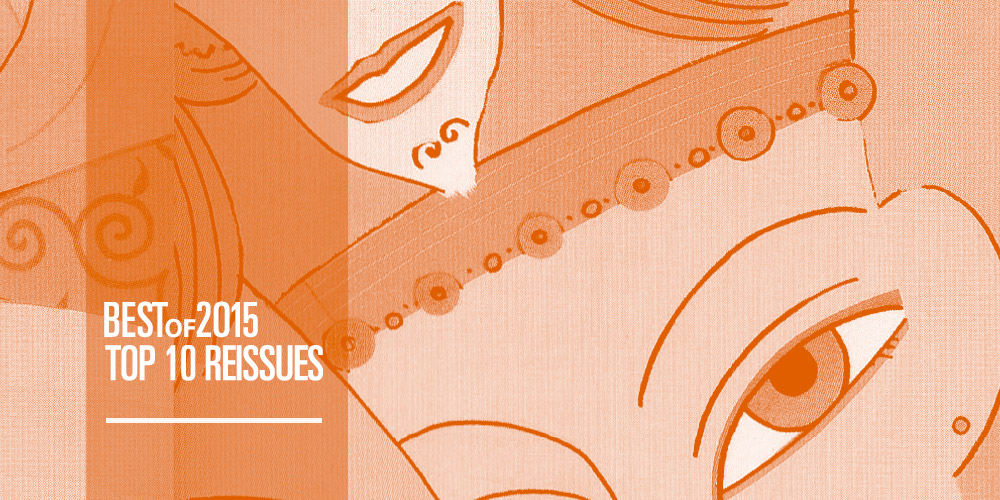
A year of fine reissue and archival releases is whittled down to our ten favourites with Mannequin, Sacred Summits, Rush Hour and more featuring.
With the amount of labels, DJs and diggers dedicated to reissue culture it’s almost as if the past is overtaking the future when it comes to defining what we’re looking forward to hearing for the first time each year. Music to make our 2015 Best Reissues list sees everything from compilations put together by dedicating DJs, to unearthed two-track 12”s spawned by chance encounters at The Orb in concert (which then lead to extra opportunities to appear in an Ice-T music video). Furthermore, you’ll find proto-Dutch techno belligerently tribal enough for Berghain, 20th year anniversary celebrations, one of the best albums to grace the western ear, and continued raids into the world of Legowelt, cassette and digital-only music.
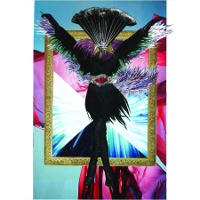 One of the best things Further have done this year, and there have been many, was to give Raica’s essential Dose cassette LP a much needed vinyl reissue. Raica is the production alias of Further Records co-founder Chloe Harris, and of the nine pieces of music she’s put out under the Raica name, Dose is the only one to be granted a vinyl release, and this decision is loudly applauded. Said to be made with “Doepfer Energy + Dark Time, Waldorf Pulse+, Waldorf Q, samples and love,” this eight-track tape would have been good enough to crown ‘Ambient Album Of 2015’ had it not been released in 2012, and considering none of the 50 cassettes originally made are listed online for purchase, it’s clearly a collection of music no one is willing to give up.
One of the best things Further have done this year, and there have been many, was to give Raica’s essential Dose cassette LP a much needed vinyl reissue. Raica is the production alias of Further Records co-founder Chloe Harris, and of the nine pieces of music she’s put out under the Raica name, Dose is the only one to be granted a vinyl release, and this decision is loudly applauded. Said to be made with “Doepfer Energy + Dark Time, Waldorf Pulse+, Waldorf Q, samples and love,” this eight-track tape would have been good enough to crown ‘Ambient Album Of 2015’ had it not been released in 2012, and considering none of the 50 cassettes originally made are listed online for purchase, it’s clearly a collection of music no one is willing to give up.
Each piece has its own supernatural allure, with tracks on the album sounding like they’ve come from an enchanted, firefly-lit backwoods (“Satmore” and “Watr Drgn”), while others are less playful, dubbed-out numbers like the arpeggiated “Tiwie” and metamorphosing album finale “Entridam”. It’s the somnolent, sleep deprived dub of “Slep_Non” embedded halfway through Dose that splinters Raica’s music as something caught between celestial and biological, while there’s cinematic references to be found in the Kubrick-ambience of “Couchfire Dron” to the crawling Italian horror thematic of “Harchone” and “Skrt”. Further’s vinyl reissue of this cassette opens a portal into the world of Raica’s music which has yet to be explored by many, just make sure to tie a string around your toe before stepping through.
9. Savant – Artificial Dance (RVNG Intl.)
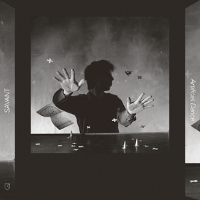 To cheekily borrow a line from one of our contributors Flora Pitrolo, is Kerry Leimer the gift that keeps giving for RVNG Intl? We were truly thankful to the New York label for shining a light on the vast archive of work produced by Leimer on last year’s 30-track retrospective, A Period of Review (Original Recordings: 1975 – 1983, but it clearly only scratched the surface on the Seattle musician’s output. In a year where the label’s focus was centred more on their roster of contemporary acts like Holly Herndon, Stella Om Source and Blondes, one of RVNG’s few archival releases sunk a whole lot deeper into Leimer’s well of sound.
To cheekily borrow a line from one of our contributors Flora Pitrolo, is Kerry Leimer the gift that keeps giving for RVNG Intl? We were truly thankful to the New York label for shining a light on the vast archive of work produced by Leimer on last year’s 30-track retrospective, A Period of Review (Original Recordings: 1975 – 1983, but it clearly only scratched the surface on the Seattle musician’s output. In a year where the label’s focus was centred more on their roster of contemporary acts like Holly Herndon, Stella Om Source and Blondes, one of RVNG’s few archival releases sunk a whole lot deeper into Leimer’s well of sound.
Artificial Dance also introduced a new side to Leimer, shifting the focus away from his reclusive solo loop-based productions to shine some light on his work with musicians from Seattle’s experimental and post-punk scene as Savant. Delving through the one Savant album and 12” issued through Leimer’s Palace of Lights label and complementing those tracks with unreleased offcuts, RVNG came out the other side with Artifcial Dance. Comparisons RVNG made with the Eno and Byrne classic My Life In The Bush Of Ghosts were wholly appropriate, but only told some of a fascinating West Coast story.
8. Ford Proco & Coil – Expansión Naranja (Mannequin Records)
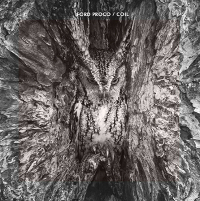 Before Alessandro Adriani’s label Mannequin unearthed this incredible find, the closest you could probably get to associating seminal British group Coil with pop culture would be Mike Tyson using their music to enter the ring of his short-lived 1988 bout with Michael Spinks. As the story goes, Robert Proco and Wito Lavolt of leftfield Mexican duo Ford Proco exchanged contact details with Coil’s Peter Christopherson after a chance meeting during a performance by The Orb back in the ‘90s. A few months later Christopherson phoned Lavolt and Proco to see if the Ford Proco pair wanted to be an extra in an Ice-T video – and the rest is history.
Before Alessandro Adriani’s label Mannequin unearthed this incredible find, the closest you could probably get to associating seminal British group Coil with pop culture would be Mike Tyson using their music to enter the ring of his short-lived 1988 bout with Michael Spinks. As the story goes, Robert Proco and Wito Lavolt of leftfield Mexican duo Ford Proco exchanged contact details with Coil’s Peter Christopherson after a chance meeting during a performance by The Orb back in the ‘90s. A few months later Christopherson phoned Lavolt and Proco to see if the Ford Proco pair wanted to be an extra in an Ice-T video – and the rest is history.
Featuring the uncanny artwork of an owl seemingly etched into the trunk of a tree, both “Ecuación De Las Estrellas” and “Expansión Naranja” from this two-track Expansión Naranja 12” were, until this year, unavailable on vinyl following their production in 1999. Halfway through “Expansion Naranja” you’ll hear vocals from the late John Balance somewhat comically wax ‘do drugs’ above blustery atmospheres and scrappy textural mist, with service bell chimes and Peter Christopherson’s lilting saxophone pieced between samples of sound reminiscent of Nurse With Wound. Meanwhile the shorter “Ecuacion De Las Estrellas” is less frenetic and far more chambered in terms of its sonic aesthetic, which sees booming industrial techno camouflaged by smokestacks of dubby soundscapes in a track that precedes much of the music made in a similar, futuristic vein today.
7. Vito Ricci – I Was Crossing A Bridge (Music from Memory)
 Music for Memory were probably not prepared for the overwhelming response to the Gigi Masin retrospective they released last year, and the Amsterdam label clearly have a lot more fans thanks to it. Many of those, ourselves included, were intrigued to see what delights Jamie Tillier, Abel Nagengast and Tako Reyenga would uncover this year. Music From Memory hasn’t disappointed. Gigi Masin was again involved, collaborating with Jonny Nash and Marco Sterk on the sublime Gaussian Curve album which opened the year for Music for Memory, but it’s the archival instincts of the label’s founders that truly delivered. A new 12” series focusing on music “that was never available in this format but might just feel more at home there,” introduced the respective delights of Joel Graham and Michal Turtle, whilst their year ended profiling the raw, outsider funk of Philadelphia’s Napoleon Cherry.
Music for Memory were probably not prepared for the overwhelming response to the Gigi Masin retrospective they released last year, and the Amsterdam label clearly have a lot more fans thanks to it. Many of those, ourselves included, were intrigued to see what delights Jamie Tillier, Abel Nagengast and Tako Reyenga would uncover this year. Music From Memory hasn’t disappointed. Gigi Masin was again involved, collaborating with Jonny Nash and Marco Sterk on the sublime Gaussian Curve album which opened the year for Music for Memory, but it’s the archival instincts of the label’s founders that truly delivered. A new 12” series focusing on music “that was never available in this format but might just feel more at home there,” introduced the respective delights of Joel Graham and Michal Turtle, whilst their year ended profiling the raw, outsider funk of Philadelphia’s Napoleon Cherry.
The centrepiece of Music From Memory’s 2015, however, was a retrospective of Vito Ricci, an unheralded artist from whom the label took their name. The late ‘70s and early ‘80s era of Downtown New York is hardly an untapped resource when it comes to reissues and archival releases, but there was still something special about sinking into the world of Vito Riccio on I Was Crossing A Bridge. Ricci’s creativity and diversity as a musician shines through when listening to this 16-track collection, veering from ironic disco jams berating drug use to epically drawn out synthscapes.
6. Soichi Terada – Presents Sounds From The Far East (Rush Hour)
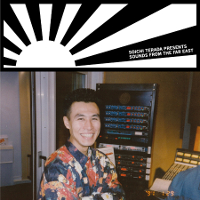 Rush Hour have plenty of form when it comes to giving artists from days gone by the retrospective treatment, leading to all new interest in the likes of the Burrell Brothers, Elbee Bad, and Virgo Four in recent years. Their presentation of Far East Recordings this year saw Hunee working with founder Soichi Terada was another fine addition to the Rush Hour archival canon, not least as it provided a wonderful overview of a label whose output has become overly expensive for modern day DJs and collectors to investigate further. It’s easy to see why Far East’s music was so widely embraced first time around when listening to this compilation with an air of positivity breezing through much of the label’s output which doffs a hat to various styles from Chicago, New York, and the UK whilst retaining a certain distinct twist.
Rush Hour have plenty of form when it comes to giving artists from days gone by the retrospective treatment, leading to all new interest in the likes of the Burrell Brothers, Elbee Bad, and Virgo Four in recent years. Their presentation of Far East Recordings this year saw Hunee working with founder Soichi Terada was another fine addition to the Rush Hour archival canon, not least as it provided a wonderful overview of a label whose output has become overly expensive for modern day DJs and collectors to investigate further. It’s easy to see why Far East’s music was so widely embraced first time around when listening to this compilation with an air of positivity breezing through much of the label’s output which doffs a hat to various styles from Chicago, New York, and the UK whilst retaining a certain distinct twist.
Perhaps more importantly, Soichi Terada Presents Sounds From The Far East has made a belated star out of the man at the centre of the compilation. Terada has clearly aged very well, with his beaming smile and penchant for wearing glossy shirts as undimmed as ever, and the manner in which he’s embraced this new found interest in his work has been very life-affirming indeed. The recent bout of performances from Terada for Rush Hour events at Concrete in Paris and Corsica Studios in London were no doubt social highlights of the year for those lucky enough to witness the man live and direct too.
5. General Magic / Pita – Fridge Trax Plus (Editions Mego)
 It’s hard to imagine that an entity as voluminous and prolific as Editions Mego ever started somewhere, its array of tones and drones seeming more likely to have manifested as an extension of tectonic shifts and industrial groans that have existed for centuries already. Fortunately, away from the metaphysical realm, the label (formerly known as Mego) first came to light in Vienna in 1994 thanks to the collusion of Ramon Bauer, Andreas Pieper and later on Peter Mieninger. The former two operated as General Magic, the latter as Pita, and between them they inaugurated their new label with a record made from samples of their refrigerator.
It’s hard to imagine that an entity as voluminous and prolific as Editions Mego ever started somewhere, its array of tones and drones seeming more likely to have manifested as an extension of tectonic shifts and industrial groans that have existed for centuries already. Fortunately, away from the metaphysical realm, the label (formerly known as Mego) first came to light in Vienna in 1994 thanks to the collusion of Ramon Bauer, Andreas Pieper and later on Peter Mieninger. The former two operated as General Magic, the latter as Pita, and between them they inaugurated their new label with a record made from samples of their refrigerator.
As well as releasing a lengthy four-track on Mego, they also delivered a recording of their performance from Interference festival 1995 to Move D’s Source Records entitled Live And Final Fridge, which further expanded the sonic possibilities contained within a humble household appliance. As well as drone pieces setting the tone for what has come since on Mego and its successor Editions Mego, there is also space within the newly combined Fridge Trax Plus for off-kilter digital funk, submerged minimal techno and madcap sample trickery that reveals a more playful side to a label with a largely po-faced reputation. As a complete body of work, this is a reissue that in many ways helps make sense of a long-standing electronic institution that often falls foul of being misunderstood by many.
4. Smackos – The Age Of Candy Candy (Berceuse Heroique)
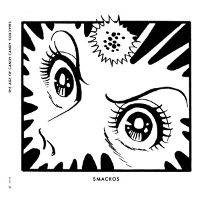 In these reissue-happy times we live in, it is a surprise that the archives of Danny Wolfers’ Strange Life label hasn’t been plundered more. Active for eight years from 2004 onwards, Strange Life was home to a cavalcade of obscure Wolfers projects as well as music from other contemporaries Luke Eargoggle, $tinkworx, Heinrich Dressel and William Burnett. Whilst our personal Strange Life favourites from Satomi Taniyama and Sammy Osmo remain sadly overlooked, two of the label’s records were granted vinyl reissues this year to rapturous applause.
In these reissue-happy times we live in, it is a surprise that the archives of Danny Wolfers’ Strange Life label hasn’t been plundered more. Active for eight years from 2004 onwards, Strange Life was home to a cavalcade of obscure Wolfers projects as well as music from other contemporaries Luke Eargoggle, $tinkworx, Heinrich Dressel and William Burnett. Whilst our personal Strange Life favourites from Satomi Taniyama and Sammy Osmo remain sadly overlooked, two of the label’s records were granted vinyl reissues this year to rapturous applause.
Local Den Haag crew BAKK should be cheered for their triple vinyl reissue of Dark Days, the first Strange Life release which collated a wedge of Wolfers’ earliest productions from the mid-to-late-‘90s, and it’s quite illuminating listening. However, the reissue of Smackos album The Age Of Candy Candy from Berceuse Heroique which landed in July proved a unanimous candidate for inclusion here. Just one of numerous examples of the Dutchman’s love of soundtrack work, The Age Of Candy Candy was Wolfers’ personal musical homage to Japanese animé series Candy Candy. Veering from the chilling to the cosmic, this 15-track set was a treat for the Legowelt fanatics and came with some superb artwork from Will Bankhead.
3. Paki Visnadi – Imaginary Choreography (Antinote)
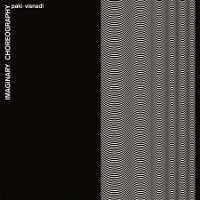 Compared to a large portion of the reissuing masses, who tend to focus much of their energy on old material and nothing but, Antinote have managed to cultivate an aesthetic that smoothly blurs the lines between the old and the new, to the point where it’s sometimes hard to know what comes where in the amorphous chronology of their releases. As well as Iueke’s ever-bountiful archive of live jam recordings, the Parisian crew and their associates have managed to make a fine art of unearthing gems from flea market obscurity and giving them a new lease of life.
Compared to a large portion of the reissuing masses, who tend to focus much of their energy on old material and nothing but, Antinote have managed to cultivate an aesthetic that smoothly blurs the lines between the old and the new, to the point where it’s sometimes hard to know what comes where in the amorphous chronology of their releases. As well as Iueke’s ever-bountiful archive of live jam recordings, the Parisian crew and their associates have managed to make a fine art of unearthing gems from flea market obscurity and giving them a new lease of life.
Imaginary Geography is a perfect case in point, making for one of the finest new treasures the label has dug out to date. The back-story alone is worth your attention, as two prolific and versatile Italian producers (Paki Zennaro and Gianni Visnadi) put their heads together to create an album to be used as practice material for dance schools. It just so happens that the music they made, while never knowingly meeting its intended destiny, was an achingly beautiful concoction of new age synths and gentle instrumentation that could equally veer towards leftfield experimentation by way of killer closing track “Mollusk Dance”. While they might never have imagined it at the time, Zennaro and Visnadi’s creation has found a wholly relevant purpose within the strange, sophisticated world of Antinote, where it could easily pass for hot-off-the-press ambience from a contemporary sonic explorer.
2. Psychick Warriors Ov Gaia – 1989 (Sacred Summits)
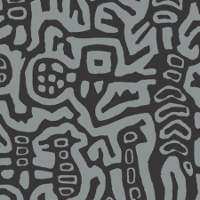 While plenty of attention is foisted upon The Hague scene and the labels splintered around Bunker, there was equally an undercurrent of deviant Dutch electronic music in operation in the hinterland between industrial and house music in the late ’80s, of which Psychick Warriors Ov Gaia were a significant part. While they would go on to explore more overtly techno-orientated material as they entered the ’90s, their first steps into recording were far more in line with the punishing drums and bleak atmospheres of groups such as Skinny Puppy and Club Moral.
While plenty of attention is foisted upon The Hague scene and the labels splintered around Bunker, there was equally an undercurrent of deviant Dutch electronic music in operation in the hinterland between industrial and house music in the late ’80s, of which Psychick Warriors Ov Gaia were a significant part. While they would go on to explore more overtly techno-orientated material as they entered the ’90s, their first steps into recording were far more in line with the punishing drums and bleak atmospheres of groups such as Skinny Puppy and Club Moral.
As Flora Pitrolo pointed out when she picked up on 1989 in her reissues column, PWOG’s first tape “shares part of its substance with tribal techno, but also with romantic noise, with early house, with lo-fi experimental new beat, in an astonishingly varied and accomplished range of impressions.” Lindsay Todd and Stuart Leath have been rather sparing with the output on their joint archival endeavour Sacred Summits, but they made a solid impact when they dropped this much-feted, long-lost tape of uncompromising upfront drum science. Whether it’s the throbbing basslines of “Intoxication” or the mechanical slam dance of “Acid Dervish”, this is the kind of reissue that reaches ever more significance in modern times thanks to the prescience of a crew that were undeniably ahead of the curve when they first announced themselves to the world. After all it’s hard to argue that banging minimal techno began with Hood, Mills et al. when the likes of “War Chant” were already in existence.
1. Mariah – Utakata No Hibi (Palto Flats)
 With the turbulent year that was 2015 about to pass, looking back it’s irritatingly too easy to get caught up in the negative electronic music chronicles of these past 12 months. Thankfully, though, a shining light to cut through the bunkum of online debate and opinion was the trove of music, new and old, to come out of Japan. We couldn’t have asked for more from that part of the world this year, with highlights of course being Rush Hour escorting Sochi Terada’s giant smile and cheery tones back into the lime light with the aforementioned Sounds from the Far East, while more recently Brawther and Alixkun curated a Japanese deep house compilation called Once Upon A Time In Japan. But of all the reissued material, Japanese or otherwise, the record which no doubt strikes a chord with everyone that’s heard it is Palto Flats’ master stroke of a reissue that is Mariah’s Utakata No Hibi.
With the turbulent year that was 2015 about to pass, looking back it’s irritatingly too easy to get caught up in the negative electronic music chronicles of these past 12 months. Thankfully, though, a shining light to cut through the bunkum of online debate and opinion was the trove of music, new and old, to come out of Japan. We couldn’t have asked for more from that part of the world this year, with highlights of course being Rush Hour escorting Sochi Terada’s giant smile and cheery tones back into the lime light with the aforementioned Sounds from the Far East, while more recently Brawther and Alixkun curated a Japanese deep house compilation called Once Upon A Time In Japan. But of all the reissued material, Japanese or otherwise, the record which no doubt strikes a chord with everyone that’s heard it is Palto Flats’ master stroke of a reissue that is Mariah’s Utakata No Hibi.
First released in 1983 (and later in 2009 by Columbia), the music on Utakata No Hibi was a secret weapon for DJs like Optimo and Prins Thomas, and Lena Willikens who famously used album hit “Shinzo No Tobira” to sensational effect closing her Resident Advisor podcast. There’s something unexplainably skewiff while wholly alluring about the music itself, and for the western ear it feels as though this comes down the unique west-meets-east crossover of new wave, synth pop and reduced elements of jazz with Asian and Middle Eastern turns of tonality. Sung half in Japanese and half in Armenian, tracks like “Sokokara”, “Hana Ga Saitara” and “Sora Ni Mau Maboroshi” go far beyond the pop sensibilities of songs like David Bowie’s “China Girl” or David Sylvian & Ryuichi Sakamoto’s “Bamboo Houses”, undeniably personifying Utakata No Hibi as timeless.